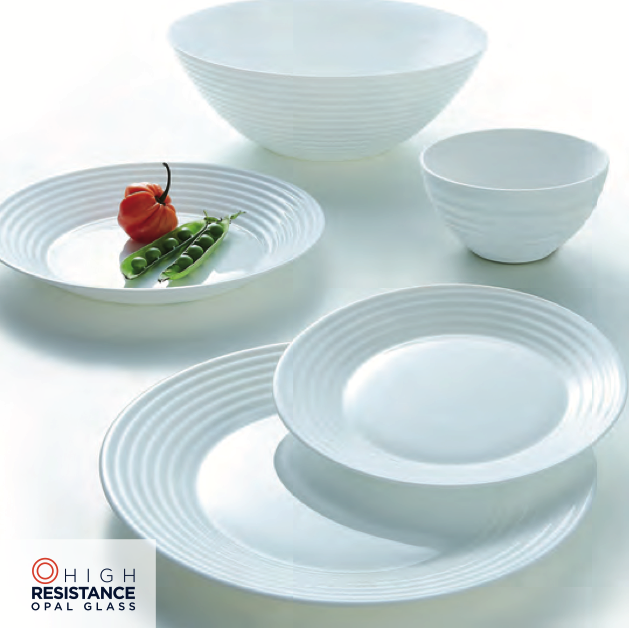Tempered glass
Which is better - tempered glass or porcelain?

(Image: Copyright by Arcoroc Luminarc, France)
We could now tread the fine line and report on the consumption of washing-up liquid or inferior thermal storage capacity, as can be read on many pages of the suppliers from the porcelain faction. You can also attribute many advantages to a duck (2CV) or a VW Beetle compared to a Mercedes or a Ferrari, which ultimately does not make them "better" cars. Tempered glass is simply different!
There are areas of use in which the mechanical load on the crockery is so considerable that the use of tempered glass is more beneficial than conventional porcelain, as the breakage rate of tempered glass is significantly lower. We will determine whether this also applies to our Alumina and High Alumina grades with specific physical values.
However, if tempered glass "shatters", the splinters can spread like an explosion to a considerable extent in the kitchen or dining room and have already "blown up" entire banquets in this way. On the other hand, tempered glass is much more precise than porcelain, which always has shrinkage tolerances due to the manufacturing process. Above all, many consumers appreciate the lightness of tempered glass, as porcelain, which is characterised by its high density, is definitely heavier.
We cannot confirm whether the old adage that tempered glass is much more susceptible to surface corrosion than porcelain is still true. Unfortunately, there are now so many porcelain imitations that they spoil the good reputation of "real" hard porcelain.
The most significant disadvantage that tempered glass has compared to porcelain is that tempered glass has no Marco Polo. It lacks the royal fervour and prestige of the many noble houses that have adorned the noble porcelain manufactories with their royal names for hundreds of years. Porcelain has always been a symbol of culture, wealth and art. Porcelain reflects the epochs of mankind and is an unshakeable symbol of table jewellery. The white gold!
Tempered glass simply comes out of a huge machine with unimaginable capacities. It is a mass product, anonymous, loveless and good as a shelf product in the supermarket. It desperately tries to tie in with the porcelain establishment and yet remains just a copy from the retort, identical in application and without its own profile.
Who wants to serve their cookery on a copy?
